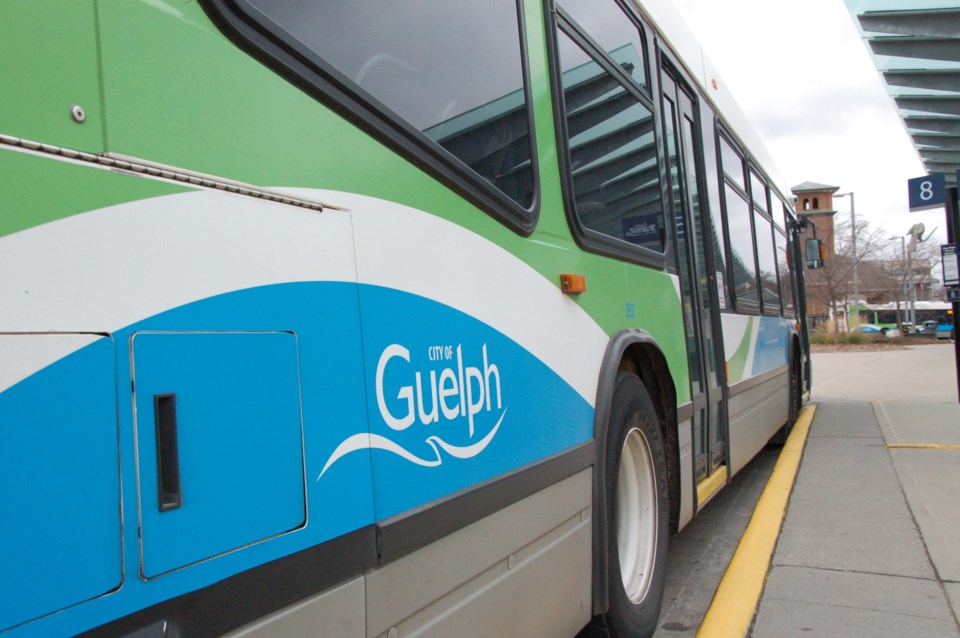Guelph Transit riders may soon see some major changes.
City staff is recommending a shift away from the central hub system to a grid structure, intended to result in higher service levels on major corridors and expanded Sunday hours through the on-demand service.
"By moving to a grid system, we are able to provide a more direct, quicker trip for passengers. They would no longer be required to transfer downtown in many instances," said Jason Simmons, Guelph Transit's manager of operations, via email. "Travel data has indicated that many trips in Guelph happen between adjacent neighbourhoods, and the current network often requires a great deal of out-of-direction travel to complete such trips."
The recommendation will be presented to council during a special meeting on Nov. 15, beginning at 6 p.m. and streamed live at guelph.ca/live.
If the concept is approved the new approach would begin next year, with most of the changes taking place during the first seven years of the 10-year plan, states a staff report.
Funding for the plan is not currently included in the city’s draft budget, which currently features a 3.64 per cent property tax increase next year and 4.69 per cent in 2023.
If council agrees with the staff recommendation, it would add a further 1.26 and 0.45 per cent respectively to property tax bills.
The recommendation follows a 20-month process of community engagement, as well as input from the city’s transit advisory committee and staff, which resulted in three options for consideration, including the recommended one, referred to as the Future Ready Plan.
“The transit business service teview included 12 recommendations of which several have already been implemented. This route review allowed us to address yet another recommendation to look at both holistic system changes as well as individual route modification and also link this work to significant master plans being developed across the organization to meet our strategic priorities,” said Robin Gerus, general manager of Guelph Transit, in a news release.
Alternative options developed by staff include The 1% Levy Plan, which features the same route structure as the recommended plan but would be implemented at a slower rate, and The High Frequency Plan, which includes increased peak, midday, evening, and/or Saturday service on some routes.
“The Future Ready Plan supports goals under all priorities of the city’s strategic plan. This plan also increases ridership over 13 years to 10.04 million, which equates to an increase of 4.29 million in ridership by 2034, or approximately a 13 per cent modal share for transit by 2031, as compared to an 11 per cent transit modal share in 2017,” explains the staff report. “This plan increases the rate at which ridership that was lost during the COVID-19 pandemic can be recovered, even offset by ridership that was permanently lost.”
In the case of the 1% Levy Plan, 2034 ridership is estimated to reach 9.95 million, an increase of 4.21 million over the life of the plan.
As for the High Frequency Plan, estimated 2034 ridership would hit 10.35 million, an increase of 4.6 million over the life of the plan.
Additional details can be found in the Guelph Transit Action Plan.